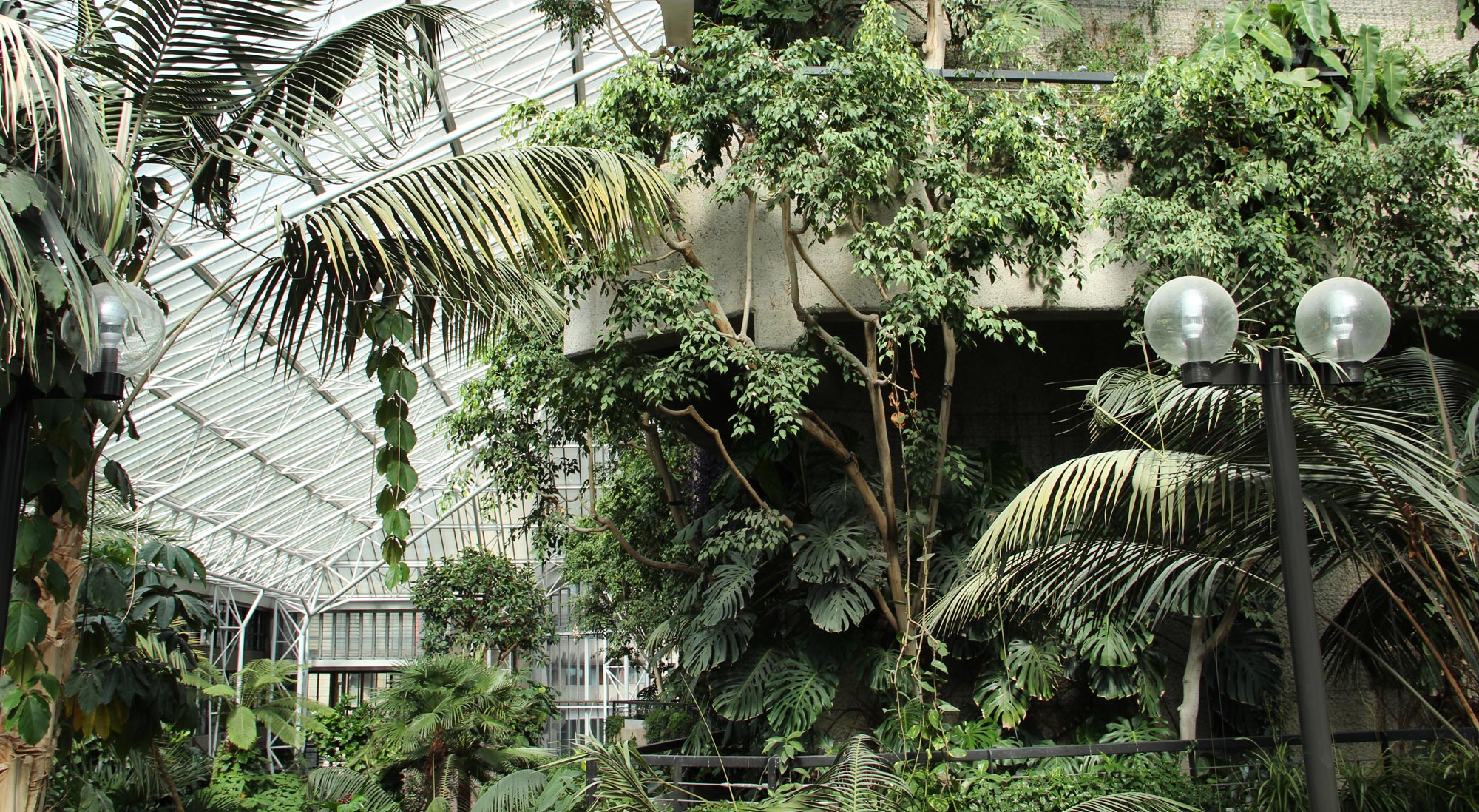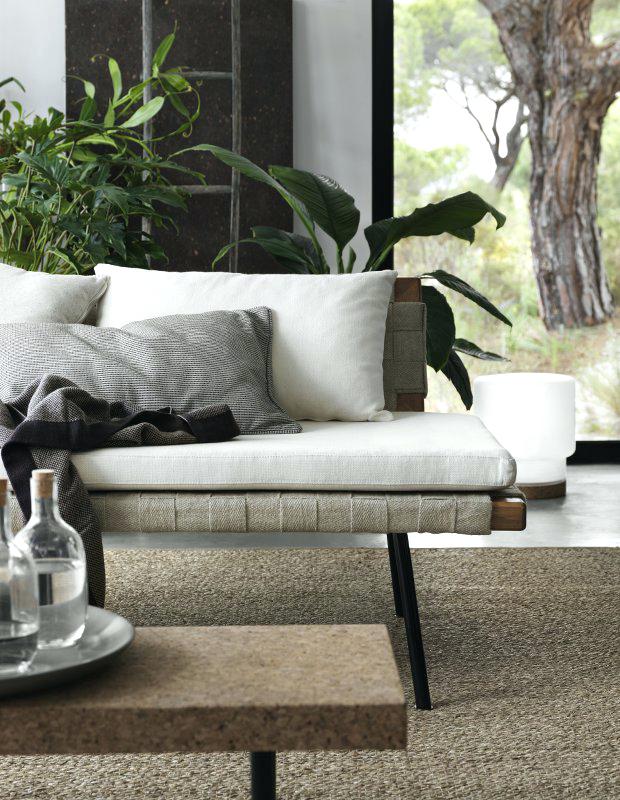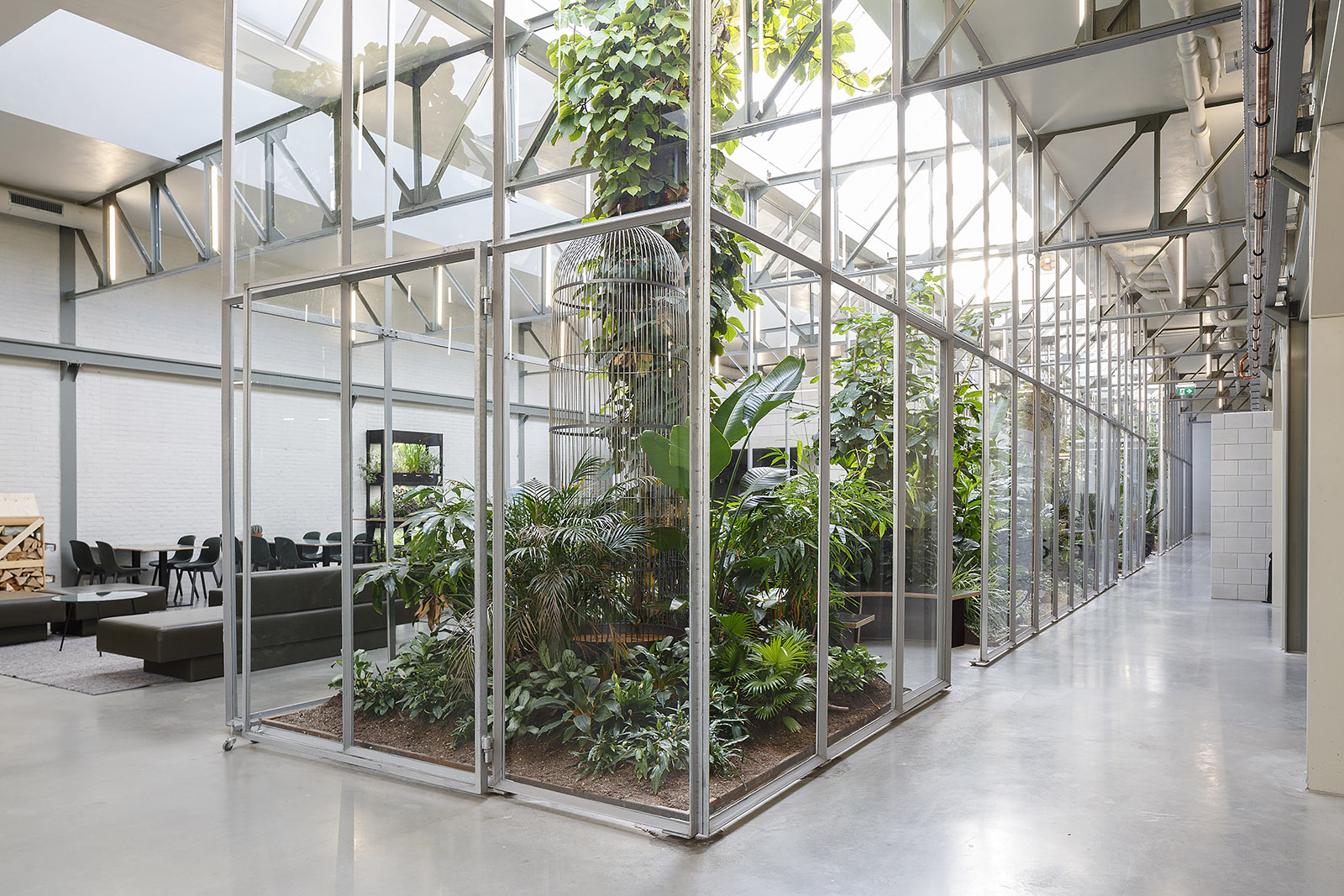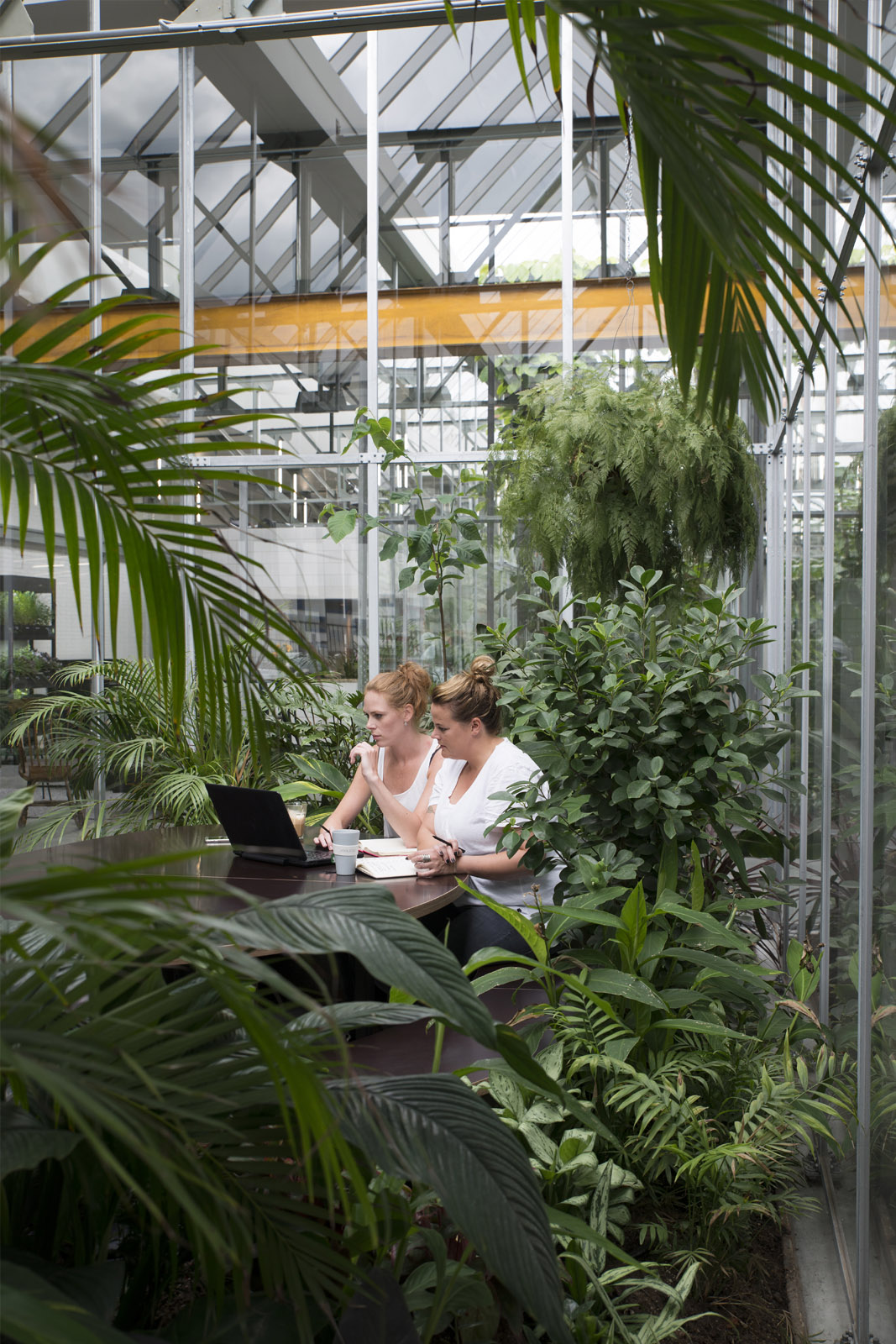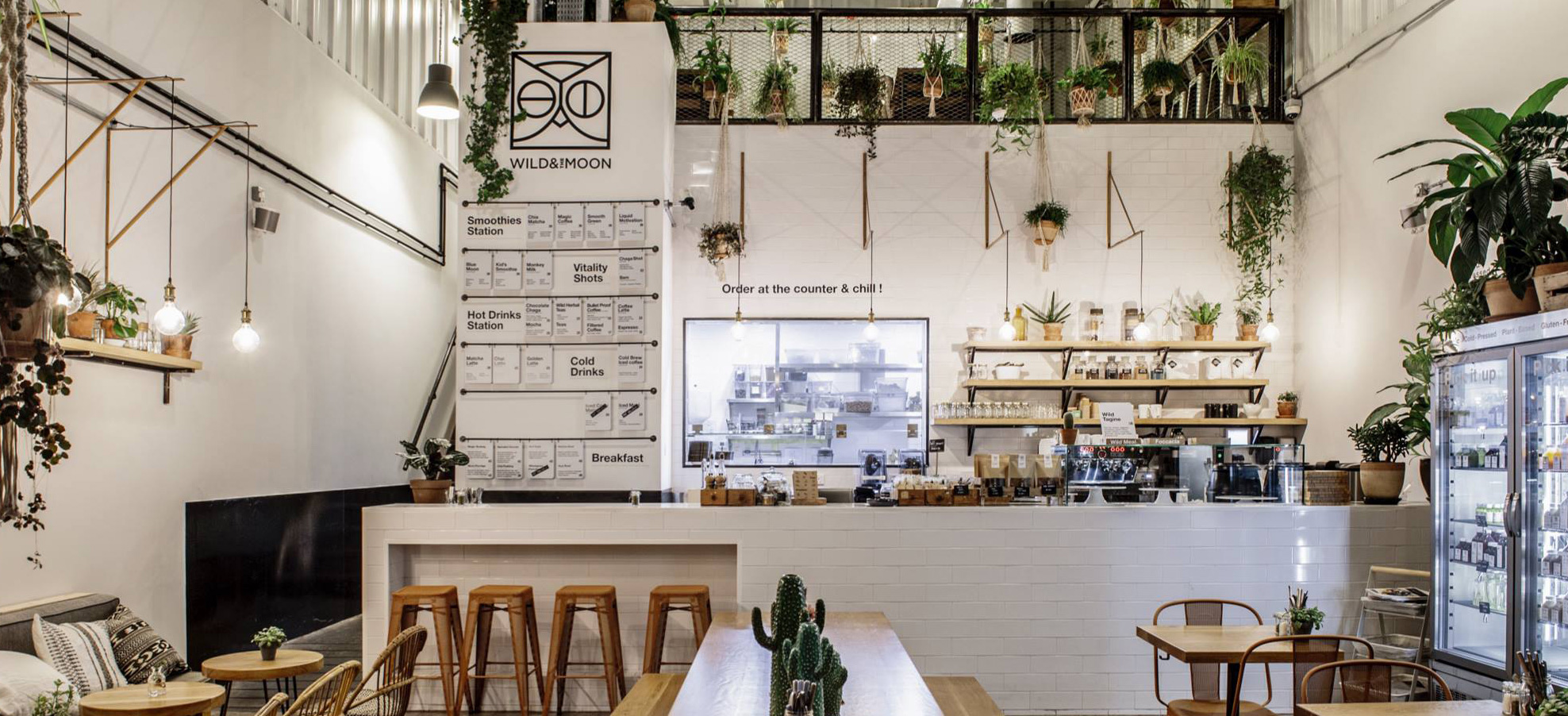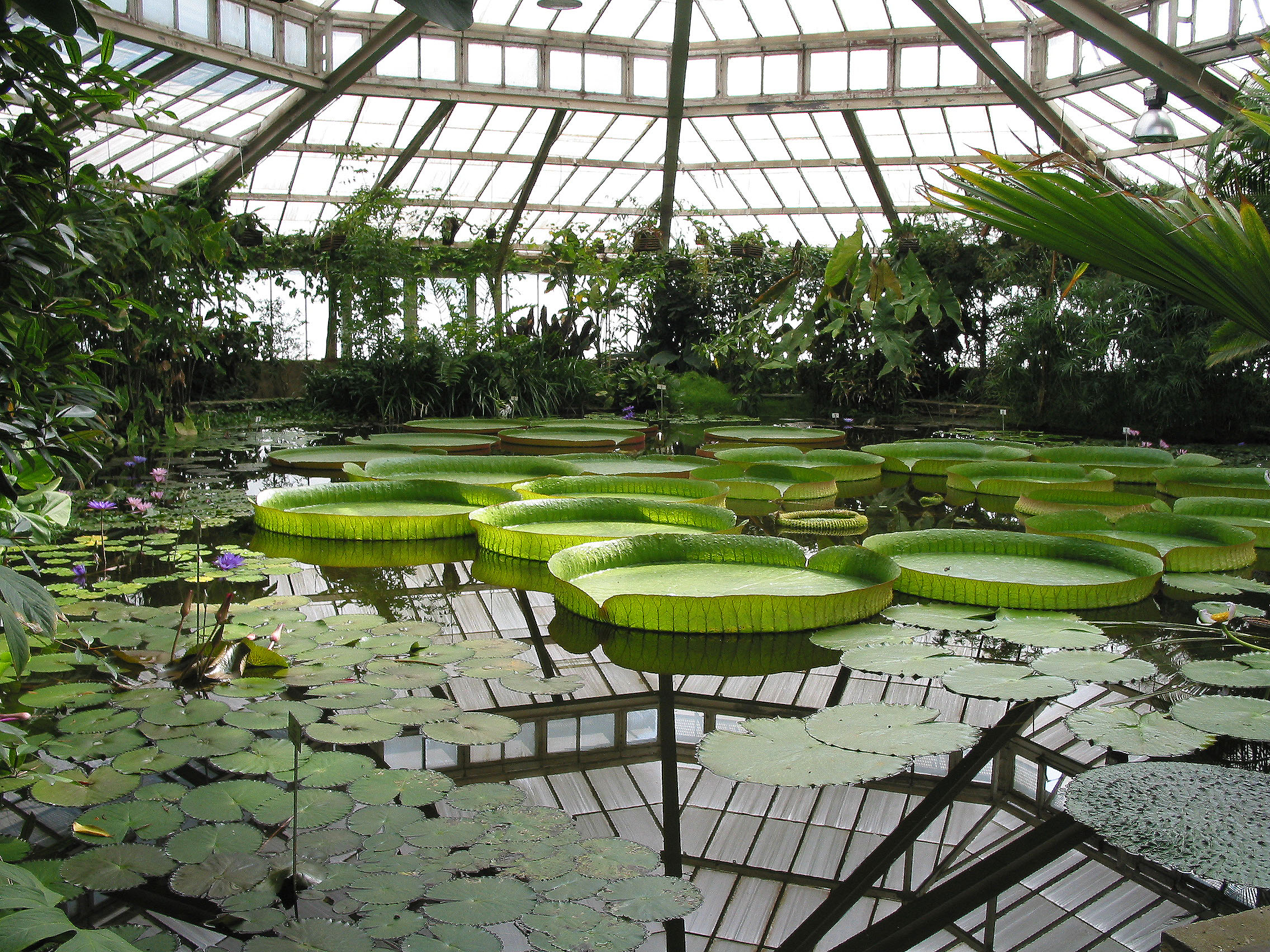«Urban Jungle – Indoors is the new outdoors»
Joan Billing & Samuel Eberli • 19.07.2018
Conservatory of the Barbican Centre, London by Chamberlin, Powell and Bon, 1971; Foto: Barbican Centre
When the London designer Ilse Crawford, one of the most successful global interior designers, entered into collaboration with the Swedish furniture producer, nobody would have guessed what impact this collaboration would have. Her visual furniture settings display a form of studio atmosphere like that in a garden centre with tables, stools and benches made of cork. In her vision, indoors and outdoors merge together, and this vision has set a worldwide trend in motion. It was at this point at the latest that the initial spark was ignited and the trend of «Guerilla gardening» was definitely moved indoors. Plants became part of the new interior trend. «Indoor gardening» provides a slowing-down of the pace of our society.
Urban Jungle – Back to Nature
This first, largely visible trigger of the current «Urban Jungle» trend has ensured that the sudden requirement for wilder and more natural sides to our homes has replaced the cool, empty lofts. After the futuristic first decade of the millennium, we are now looking for the opposite, namely a natural, unplugged version, for genuine materials with sustainability, which will bring back our inner peace and harmony. All cool design studios, whether they are in Brooklyn or Paris, have large-leafed trendy plants such as the fiddle-leaf in a basket with a handle as their new type of pet. The hipster major corporates have small conservatories as a seating area and oasis of relaxation, which act as the new linchpins for the young, digital generation. House plants grow like a green thread through our homes from the bathroom, via the bedroom, in the kitchen to the dining room and can therefore now be found in every room. It has now come to the point that some people would like a mini greenhouse, a vegetable or herb garden in the middle of their own living rooms. The new slogan is – «Indoors is the new outdoors».
Plant virus – from New York to Paris
This plant virus can not only be found in florists, garden centres and private homes, but also in bars, restaurants, hotel lobbies and shops from Los Angeles to Tokyo. In the meantime it has even gone so far that one sometimes doesn’t even know if one is standing in a bookshop, a restaurant or a florists. One can relax in bars with a jungle feeling, in the middle of a sea of plants, which climb up the walls or hang from the ceilings. At the same time we can enjoy our green Fairtrade smoothie, a green cactus cocktail or a Matcha beer. Green fever is now entering all aspects of our lives. We let interiors, furniture and fashion green up and green groceries have a real cult following. In all this the subject of more sustainable and resource-saving products plays a central role. The vegan movement with its new image for shops and packaging also give this all-encompassing plant virus a strong additional push. Suddenly the handmade macramés with hanging plants are back in fashion in the world’s metropolises.
The new stars – Swiss cheese plants, succulents and cacti
There was a time when house-plants were a clear statement of bourgeoisie. But now everything is definitely different, and our green companions are making a grand comeback. A real community of «Plant Lovers» has now been created. This botanical style of living combined with vintage furniture and a clearly selective choice of plants, led by aloe, succulents, Echevaria, Swiss cheese plants and cacti, reflects not only a global community of plant-lovers, but also our society and the time in which we are living.
The Swiss cheese plant style icon and the well-known rubber tree are re-establishing themselves as the new cult plants for the first time since the 1960s and are replacing the white orchid.
The fact that plants are making such a strong entrance into our homes is also connected to the fact that we are spending more time indoors on our computers. We therefore long for something to balance this out. Anyone who cannot go into the woods every day, is now bringing the jungle home, in line with the slogan of «Back to Nature». Plant designs can also be seen everywhere, including on wallpaper, jewellery, napkins and even on cushions. They all remind us of nature, woods, moss and even of the jungle.
A jungle in New York
Another good example of the «Urban Jungle» trend is the first ecological top model Summer Rayne Oakes, who completed her degree in environmental sciences at Cornell University as the top student in her year. She is a clear pioneer of Generation Y and is helping to characterise this generation with her new visions. In her Brooklyn apartment covering a good 100 square metres, she keeps more than 500 different plants. When one enters her loft, it’s like a wonderful walk through the jungle. This retreat in the middle of the overly hectic pace of everyday life in New York shows that nature conservation begins within one’s own four walls in a city. Summer Rayne Oakes now mainly gives specialist presentations and lectures about nature conservation and sustainability. With her consulting agency SRO she advises young ecological fashion labels. Her role models include Alexander von Humboldt, whose research at the beginning of the 19th century influenced Charles Darwin and still forms the basis of ecology. A wide range of media, including The New York Times, have reported on her work. The magazine Amica counts her among the top 20 trend setters under 40 years old and CNBC included her in the list of the 10 best green entrepreneurs for good reason.
The Green Community
Igor Josifovic from Munich also discovered his personal niche – plants – with his «Happy Interior» blog. He had no idea how much it would grow. Together with Judith de Graaf from Paris, he established the «Urban Jungle Bloggers» community. They believed that there had to be even more people like them, who wanted to make their homes more beautiful with plants. They both pursued this idea to such an extent that there is now a jungle of blogs for like-minded people. For three years they gathered inspiration to publish the manual «Wohnen in Grün» (Living in green) – the self-help bible for living with plants. In it they lead readers through «green» homes in five European countries and show how beautiful, unique and artistic one can live with plants. It presents house-plants such as the hovering Japanese plant Kokedamas, how to care for it and all manner of ideas regarding the urban jungle. The list with such examples can be continued almost endlessly. The «Urban Jungle» trend will stay with us for quite some time yet. Let yourself be seduced by the luxury of the plant virus.
Meise (Belgique), Jardin National Botanique de Belgique – Palais des Plantes – Serre Victoria; Foto: Jean-Pol_Grandmont
The landscape gardener Dieter Kienast put it in a nutshell:
«The garden is the last luxury of our times because it requires what is most precious in our society: time, attention and space.»
